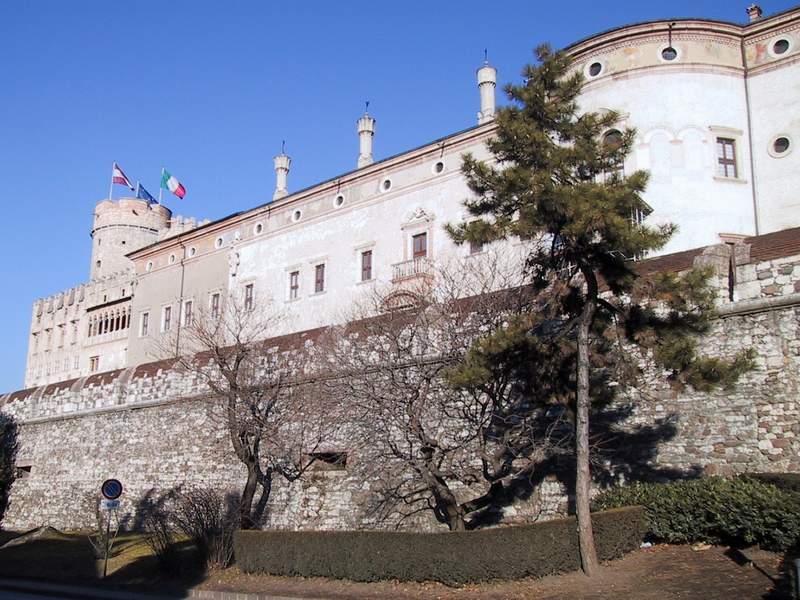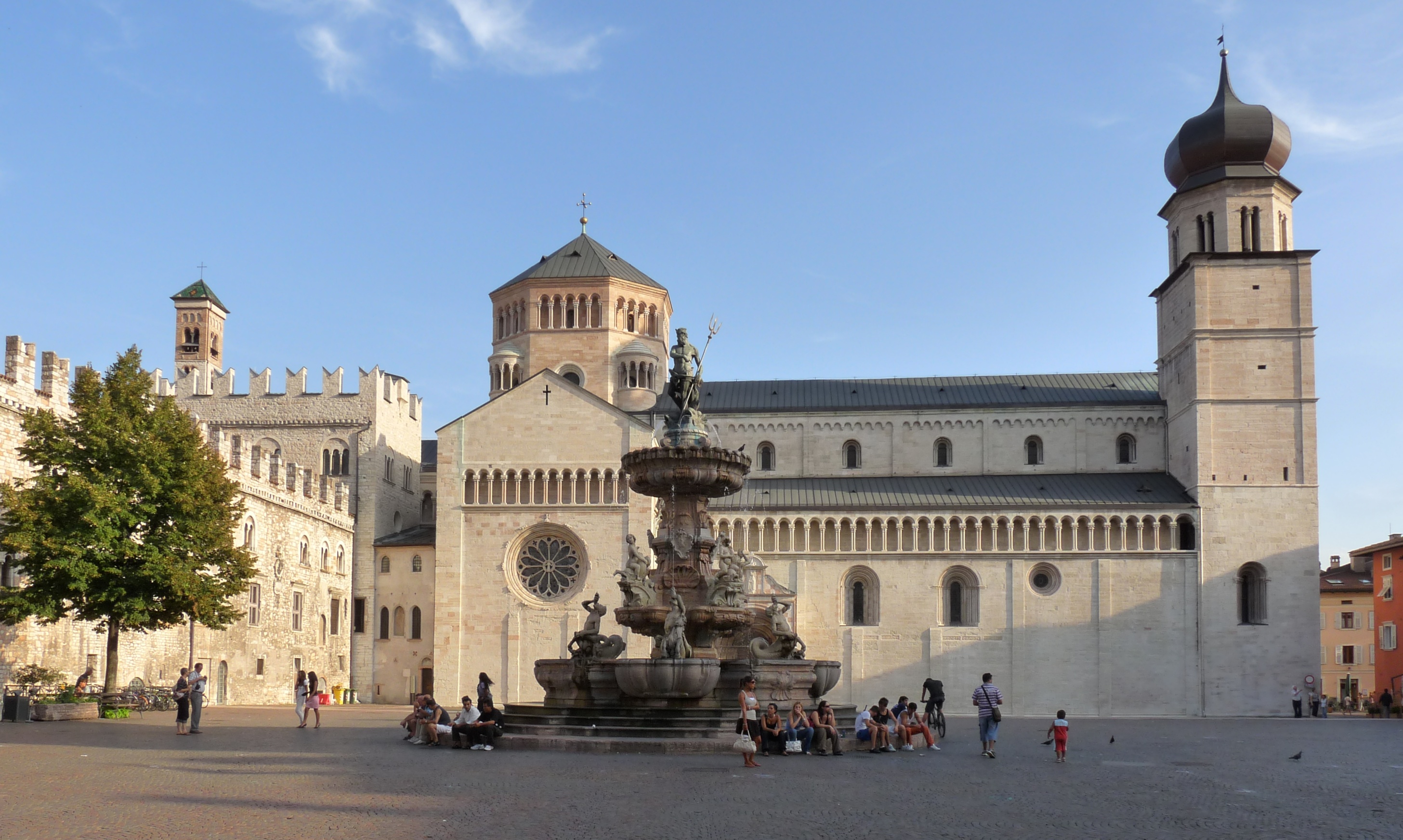|
Altrei
Altrei (; it, Anterivo ) is a ''comune'' (municipality) in South Tyrol in northern Italy. Geography Altrei is the only South Tyrolean municipality in the Fiemme Valley of the Southern Limestone Alps, located about south of Bolzano half-way to the city of Trento. The surrounding communities of Capriana, Carano, Castello-Molina di Fiemme, and Valfloriana in the north, south and east all belong to the Trentino Trentino ( lld, Trentin), officially the Autonomous Province of Trento, is an autonomous province of Italy, in the country's far north. The Trentino and South Tyrol constitute the region of Trentino-Alto Adige/Südtirol, an autonomous regio ... province, except for Truden im Naturpark, Truden in the northwest. In the southeast, the Altrei municipal area stretches down to the Avisio valley. Large parts belong to the Trudner Horn Nature Park. As of 30 November 2010, Altrei had a population of 384 and an area of .All demographics and other statistics: Italian statist ... [...More Info...] [...Related Items...] OR: [Wikipedia] [Google] [Baidu] |
Castello-Molina Di Fiemme
Castello-Molina di Fiemme (''Castèl e Molina'' in local dialect) is a ''comune'' (municipality) in Trentino in the northern Italian region Trentino-Alto Adige/Südtirol, located about northeast of Trento. As of 31 December 2004, it had a population of 2,172 and an area of .All demographics and other statistics: Italian statistical institute Istat. The municipality of Castello-Molina di Fiemme contains the ''frazioni'' (subdivisions, mainly villages and hamlets) Predaia and Stramentizzo. Castello-Molina di Fiemme borders the following municipalities: Carano, Cavalese, Altrei, Valfloriana, Pieve Tesino Pieve Tesino (''La Piève'' in local dialect) is a '' comune'' (municipality) in Trentino in the northern Italian region Trentino-Alto Adige/Südtirol, located about east of Trento. Pieve Tesino borders the following municipalities: Tesero, ... and Telve. Demographic evolution Colors= id:lightgrey value:gray(0.9) id:darkgrey value:gray(0.8) id:sfondo value:rgb(1, ... [...More Info...] [...Related Items...] OR: [Wikipedia] [Google] [Baidu] |
Fiemme Valley
300px, Location of the Fiemme Valley in Trentino. 300px, The Val di Fiemme, german: Fleimstal) is a valley in the Trentino Provinces of Italy">province, i.e. the southern half of the Trentino-Alto Adige/Südtirol Regions of Italy, region, in northern Italy, located in the Dolomites mountain region. History In Classical Antiquity, the valley was part of the Cisalpine Gaul province of the Roman Empire. Following the Augustan organization of Italy, the valley became part of Roman Italy. Since the 11th century and until 1803, Fiemme Valley belonged to the county of Trent, part of the Bishopric of Trent within the Holy Roman Empire. After the treaty of Luneville, under the name "Welschtirol" (i.e. Italian- Ladin speaking Tyrol) it became part of the county of Tyrol under the Austrian Empire. In 1920 with the Treaty of Saint-Germain-en-Laye at the end of the first World War it was annexed to the kingdom of Italy. Municipalities The following comuni are located in Fiemme Va ... [...More Info...] [...Related Items...] OR: [Wikipedia] [Google] [Baidu] |
Truden Im Naturpark
Truden im Naturpark (; it, Trodena nel parco naturale ) is a ''comune'' (municipality) in South Tyrol in northern Italy, located about south of the city of Bolzano. Until March 2008 it was called simply Truden. Geography As of November 30, 2010, it had a population of 1,007 and an area of . Truden borders the following municipalities: Aldein, Altrei, Capriana, Carano, and Montan. Frazioni The municipality of Truden contains the ''frazioni'' (subdivisions, mainly villages and hamlets) Kltenbrunn (Fontanefredde), Mühlen (Molini di Trodena), and San Lugano. History Coat-of-arms The shield is barry of four of argent and gules and represents the crosier and the martyrdom hook, both of or in saltire with two palm branches on each side and a mitre over all. The emblem, granted in 1930, represents the insignia of Saint Blaise Blaise of Sebaste ( hy, Սուրբ Վլասի, ''Surb Vlasi''; el, Ἅγιος Βλάσιος, ''Agios Vlasios''; ) was a physician and bishop of Seb ... [...More Info...] [...Related Items...] OR: [Wikipedia] [Google] [Baidu] |
Capriana
Capriana (''Caoriana'' in local dialect) is a ''comune'' (municipality) in Trentino in the northern Italian region Trentino-Alto Adige/Südtirol, located about northeast of Trento. Capriana borders the following municipalities: Montan, Truden, Altrei, Salorno Salorno sulla Strada del Vino (; german: Salurn ) is the southernmost ''comune'' (municipality) in South Tyrol in northern Italy, located about southwest of the city of Bolzano. It is one of only five mainly Italian-speaking municipalities in S ..., Valfloriana, Altavalle, and Sover. Capriana is the birthplace of the mystic and Servant of God Maria Domenica Lazzeri.Guido Sommavilla ''Maria Domenica Lazzeri'' San Paolo Press 1996 References Cities and towns in Trentino-Alto Adige/Südtirol {{TrentinoAltoAdige-geo-stub ... [...More Info...] [...Related Items...] OR: [Wikipedia] [Google] [Baidu] |
Valfloriana
Valfloriana is a ''comune'' (municipality) in Trentino in the northern Italian region Trentino-Alto Adige/Südtirol, located about northeast of Trento. As of 31 December 2004, it had a population of 538 and an area of .All demographics and other statistics: Italian statistical institute Istat. Valfloriana borders the following municipalities: Capriana, Altrei, Castello-Molina di Fiemme, Sover, Lona-Lases Lona-Lases (''Lóna e Lasés'' in local dialect) is a ''comune'' (municipality) in Trentino in the northern Italian region Trentino-Alto Adige/Südtirol, located about northeast of Trento. As of 31 December 2004, it had a population of 768 and an ..., Telve and Baselga di Pinè. Demographic evolution Colors= id:lightgrey value:gray(0.9) id:darkgrey value:gray(0.8) id:sfondo value:rgb(1,1,1) id:barra value:rgb(0.6,0.7,0.8) ImageSize = width:455 height:303 PlotArea = left:50 bottom:50 top:30 right:30 DateFormat = x.y Period = from:0 till:2000 TimeAxis = o ... [...More Info...] [...Related Items...] OR: [Wikipedia] [Google] [Baidu] |
Trentino-Alto Adige/Südtirol
it, Trentino (man) it, Trentina (woman) or it, Altoatesino (man) it, Altoatesina (woman) or it, Sudtirolesegerman: Südtiroler (man)german: Südtirolerin (woman) , population_note = , population_blank1_title = Official languages , population_blank1 = Italian German (South Tyrol) , population_blank2_title = Other languages , population_blank2 = in some municipalities: Ladin MochenoCimbrian , demographics_type1 = Citizenship , demographics1_footnotes = , demographics1_title1 = Italian , demographics1_info1 = 93% , timezone1 = CET , utc_offset1 = +1 , timezone1_DST = CEST , utc_offset1_DST = +2 , postal_code_type = , postal_code = , area_code_type = ISO 3166 code , area_code = IT-32 , blank_name_sec1 ... [...More Info...] [...Related Items...] OR: [Wikipedia] [Google] [Baidu] |
Prince-Bishopric Of Trent
The Prince-Bishopric of Trent ( la, Episcopatus ac Principatus Tridentinus; german: Hochstift Trient, Fürstbistum Trient, Bistum Trient) was an ecclesiastical principality roughly corresponding to the present-day Northern Italian autonomous province of Trentino. It was created in 1027 and existed until 1802, when it was secularised and absorbed into the County of Tyrol held by the House of Habsburg. Trent was a ''Hochstift'', an Imperial State under the authority of a prince-bishop at Trento. History Middle Ages A first Bishop of Trent is recorded as a participant of the synod at Aquileia in 381. The area was part of the Lombard Kingdom and the Kingdom of Italy, until the 951 campaign of German king Otto I against King Berengar II of Italy. In 952 Berengar had to cede the March of Verona to Otto, who enfeoffed his younger brother Duke Henry I of Bavaria. From 1004 Emperor Henry II the Saint and his successor Conrad II separated several smaller territories in th ... [...More Info...] [...Related Items...] OR: [Wikipedia] [Google] [Baidu] |
Habsburg Monarchy
The Habsburg monarchy (german: Habsburgermonarchie, ), also known as the Danubian monarchy (german: Donaumonarchie, ), or Habsburg Empire (german: Habsburgerreich, ), was the collection of empires, kingdoms, duchies, counties and other polities that were ruled by the House of Habsburg, especially the dynasty's Austrian branch. The history of the Habsburg monarchy can be traced back to the election of Rudolf I as King of Germany in 1273 and his acquisition of the Duchy of Austria for the Habsburg in 1282. In 1482, Maximilian I acquired the Netherlands through marriage. Both realms passed to his grandson and successor, Charles V, who also inherited the Spanish throne and its colonial possessions, and thus came to rule the Habsburg empire at its greatest territorial extent. The abdication of Charles V in 1556 led to a division within the dynasty between his son Philip II of Spain and his brother Ferdinand I, who had served as his lieutenant and the elected king of Hungary a ... [...More Info...] [...Related Items...] OR: [Wikipedia] [Google] [Baidu] |
Maria Theresa
Maria Theresa Walburga Amalia Christina (german: Maria Theresia; 13 May 1717 – 29 November 1780) was ruler of the Habsburg dominions from 1740 until her death in 1780, and the only woman to hold the position '' suo jure'' (in her own right). She was the sovereign of Austria, Hungary, Croatia, Bohemia, Transylvania, Mantua, Milan, Lodomeria and Galicia, the Austrian Netherlands, and Parma. By marriage, she was Duchess of Lorraine, Grand Duchess of Tuscany and Holy Roman Empress. Maria Theresa started her 40-year reign when her father, Emperor Charles VI, died on 20 October 1740. Charles VI paved the way for her accession with the Pragmatic Sanction of 1713 and spent his entire reign securing it. He neglected the advice of Prince Eugene of Savoy, who believed that a strong military and a rich treasury were more important than mere signatures. Eventually, Charles VI left behind a weakened and impoverished state, particularly due to the War of the Polish Succession and ... [...More Info...] [...Related Items...] OR: [Wikipedia] [Google] [Baidu] |
Tramin An Der Weinstraße
Tramin an der Weinstraße (; it, Termeno sulla Strada del Vino ), often abbreviated to Tramin or Termeno, is a ''comune'' (municipality) in South Tyrol, northern Italy, located about southwest of the city of Bolzano. The name of the grape variety Gewürztraminer has its origins in Tramin. Geography As of November 30, 2010, Tramin had a population of 3,296 and an area of .All demographics and other statistics: Italian statistical institute Istat. The municipality contains the ''frazioni'' (subdivisions, mainly villages and hamlets) Rungg (Ronchi) and Söll (Sella). Tramin borders the following municipalities: Amblar, Kaltern, Coredo, Kurtatsch, Neumarkt, Montan, Auer, Sfruz and Vadena. History Coat of arms The emblem represents a six points star of or surmounted by an or overturned crescent on azure background. The origin of the coat is not known but derives from that of Lords of Eppan. The arms were granted in 1929. Society Linguistic distribution According to th ... [...More Info...] [...Related Items...] OR: [Wikipedia] [Google] [Baidu] |
Italian Language
Italian (''italiano'' or ) is a Romance language of the Indo-European language family that evolved from the Vulgar Latin of the Roman Empire. Together with Sardinian, Italian is the least divergent language from Latin. Spoken by about 85 million people (2022), Italian is an official language in Italy, Switzerland ( Ticino and the Grisons), San Marino, and Vatican City. It has an official minority status in western Istria (Croatia and Slovenia). Italian is also spoken by large immigrant and expatriate communities in the Americas and Australia.Ethnologue report for language code:ita (Italy) – Gordon, Raymond G., Jr. (ed.), 2005. Ethnologue: Languages of the World, Fifteenth edition. Dallas, Tex.: SIL International. Online version ... [...More Info...] [...Related Items...] OR: [Wikipedia] [Google] [Baidu] |





